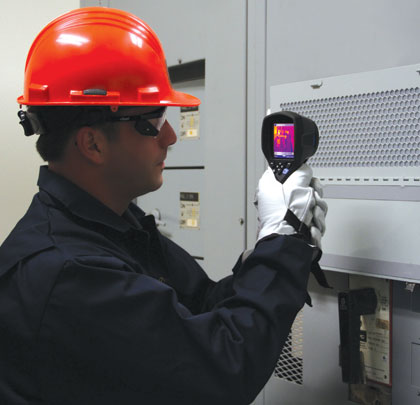Pumping machinery is continually subjected to wear and tear and therefore is vulnerable to failure. Correct operation, timely maintenance, and upkeep of pumping station machinery ensures uninterrupted operation and extends the life of the equipment. Sudden failures can be avoided by timely inspections, follow up actions, and planned periodical maintenance.
Equipment reliability is critical in any production environment, especially when it comes to pumps. There are several diagnostic methods that are very helpful in monitoring equipment health. Well-implemented programs can often recognize degradation in the initial stage. In some cases, a root cause of the problem can be identified and mitigated before further damage is done. In others, developing problems can be monitored carefully and trended, allowing preventive or corrective action to be initiated in planned environment instead of having to address failures that cause unplanned outages.
PREVENTATIVE MAINTENANCE OF PUMPING EQUIPMENT
Lack of preventative, timely, or poor maintenance can cause undue wear and tear leading to premature failure of equipment. Condition based maintenance (CBM) techniques are invaluable for keeping pump reliability high and life-cycle costs low. Diagnostic monitoring of electrical distribution systems during pump operation includes the use of electrical maintenance safety devices (EMSDs) such as infrared windows that help to reveal early signs of trouble.
Infrared (IR) windows can help detect unusual heat in electrical controls, motors, and bearing that is undetectable by ordinary means. Using IR windows on electrical and mechanical components helps to quickly detect temperature differences on mechanical equipment via non-destructive, non-contact temperature measurements. Using IR windows is a very fast and efficient method to scan pieces of equipment quickly, searching for thermal anomalies. With baseline scan records, trend analysis of motors, and bearings provide early warning of impending problems.
IRISS IR windows utilize infrared transmissive polymers. These material are unaffected by mechanical stress, moisture, humidity, seawater, and a broad spectrum of acids and alkalis so are ideally suited for any type of pumping equipment. Another significant advantage of polymer based IR windows is they can be any size and shape. IRISS customized IR windows can even be designed in a curved or rainbow shape to fit around a mechanical guard or pumping device.
EMSDS IN ACTION
The use of electrical maintenance safety devices is growing as companies strive to improve profitability, uptime, and safety. They allow the testing of fully energized electrical systems and pumping equipment without risk to personnel. Those who are implementing EMSD based programs are reaping significant benefits in terms of efficiency gains, cost control and fire prevention. Because lower PPE levels are required, inspections are quicker.
One of the tasks that need to be completed on pumping equipment while it is energized and under load is infrared (IR) scanning. To allow the inspections to be completed under load, we use an IR window, which is an EMSD that allows an IR camera to see the energized loaded connections through a special lens materials in the IR windows. Much of the recent acceptance of IR windows has coincided with the increase in level of awareness regarding electrical safety and risk reduction. Organizations such as the IEEE have been at the vanguard of this movement with its “Safer by Design” campaign.
VERSATILE DIAGNOSTIC APPLICATIONS
Other tasks where EMSDs are used include:
- Airborne ultrasound (EMSD – ultrasound ports)
- Voltage detection (EMSD – external voltage detection ports)
- Motor current analysis (EMSD – voltage tap off connections)
Other EMSD strategies include the use of online monitoring systems that transmit data back directly to the client utilizing either wired or wireless sensor systems. These systems include:
- Temperature measurement (contact and non-contact systems)
- Vibration analysis (rotating UPS and generator systems)
- Power quality (online and fixed data collection systems)
- Partial discharge (online and fixed data collection systems)
BENEFITS OF EMSDS
The benefit of using EMSDs is that they standardize the inspection routes as they become data collection points for the test equipment. They also ensure that all the inspection parameters are fixed and that all collected data is standardized ensuring that any trend analysis data is accurate. Other benefits include:
- Remove risk of electrocution and possible triggers of an arc flash incident
- Removal of high risk behaviors
- Conduct valuable, fully loaded online inspections
- Access Inaccessible equipment
- inspections require less manpower
- inspections require lower Personal Protection Equipment (PPE) levels
- inspections are faster and more efficient
- More inspections are completed due to ease of operation
It is significant that most electrical maintenance and safety standards value the use of condition based maintenance (CBM) inspections such as IR surveys, ultrasound inspections, vibration analysis, MCA, and partial discharge testing as a critical part of an electrical preventative maintenance program. EMSDs provide a way for companies to comply with recommendations for inspection and safety standards/guidelines while also protecting their personnel, equipment, and profits. ■
ABOUT THE AUTHOR
Martin Robinson is the chief executive officer of IRISS, Inc. IRISS stands for Infrared (IR) Inspection Support Solutions and is committed to universally mitigate the risk for electrocution and arc blast during the inspection of energized electrical equipment. For more information, visit www.iriss.com.
_________________________________________________________________________
MODERN PUMPING TODAY, February 2014
Did you enjoy this article?
Subscribe to the FREE Digital Edition of Modern Pumping Today Magazine!
![]()


